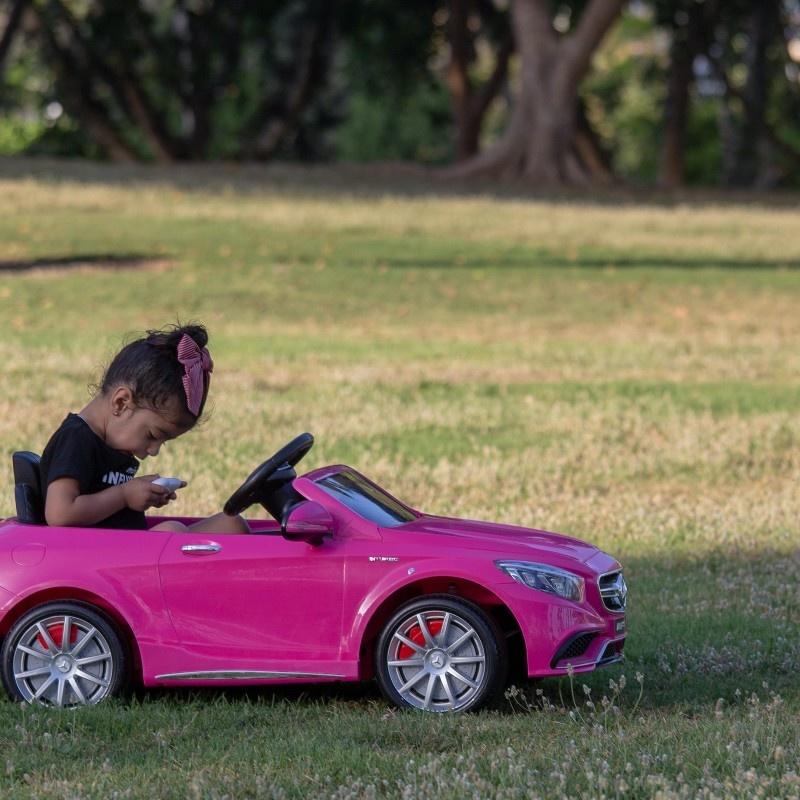Best Information About Kids Power Wheel Brakes You Shall Know
Kids power wheel toys are intended for usage on flat terrain and are engineered to stop quickly. On level roads, kids ride on cars that feature a unique braking system that works well but has problems on hills.
The majority of kids power wheel have brakes. When the accelerator pedal is released, its braking mechanism shorts the motor to a resistor, resulting in effective brakes. However, there are specific circumstances in which the brake system’s operation may be jeopardized.
How Kids Power Wheel Brakes Work And How To Modify Them
When allowing their children to play with ride on car toys in situations where there may be rapid falls, such as stairwells, parents should exercise caution. Steep hillsides and other rapid drops could cause serious bodily harm to both the power wheel rider and pedestrians around.
When the accelerator pedal is released, kids electric cars brakes instantly slow or stop power wheel motion by shorting the motor to a resistor. As it struggles to keep up with blocking all of the energy coming from rotating motors, the resistance generates heat and wear.
When you step on the brake pedal inside the ride on car, the power wheel braking system is designed to stop the drive wheels from spinning. The brakes stop the kids power wheel from turning by pressing down on rubber bands or metal springs that press against an axle near the wheel hub.
To avoid such incidents, parents should always supervise their children when riding them around the home or yard, making sure that no one else is there. To put it another way, ride on car braking is a vital safety feature that could save your child’s life.
Brake Reduction Module In Power Wheel
The kids car toys equivalent of a brake system is the Brake Reduction Module. It’s only for kids power wheel with remote control, therefore it might not work with other brands or designs that are comparable. The Power Wheel Brake Reduction Module, on the other hand, has some drawbacks, including:
If you release the pedal while traveling downhill, this mechanism would most likely fail to stop your ride on car, which could result in an accident. This module will not take any action in the event of a rollback (which is very common). As a result, power wheel for kids uses a brake reduction module to reduce the amount of strain on the motor when braking by using kinetic energy-produced friction rather than mechanical force generated by breaking elements like steel drums. These break reduction modules do not prevent ride on cars from driving; rather, they slow them down.
Should I Change The Brake System On My Ride On Cars?
Adding a brake pedal or LED lights to kids power wheel toys are two examples of improvements. These additions may be useful, but they may have a negative impact on your kids car’s battery.
A power wheel braking system should not be modified. The system may not perform as intended if a kids electric car has been modified. The motor may overheat if it is subjected to additional stress.
Installing aftermarket devices like LED lights, for example, will cause some kids power wheel motors to overheat faster than usual owing to lengthy durations of running with these resistors on. This is not how ride on cars for kids are supposed to be used.
Any alterations to a kids car may put undue strain on the motor and shorten the battery life of the ride on toys. The power wheel for kids should be used as intended, with the original ride on car batteries.
Why Do My Power Wheel Brakes Not Work?
A broken wire can disrupt power transmission from the batteries to the motors or cause kids power wheel to stop working entirely, so finding the problem quickly is essential before moving on to the next step in troubleshooting kids cars. If any component of the wiring was damaged or mishandled during installation, there’s no way of knowing what other issues might arise down the road.
If your ride on cars isn’t working, the first thing you should do is look for a broken wire. Even if you can’t see it, this is a common cause of power wheels failure and should always be checked first when dealing with kids electric cars that aren’t working.
Power Wheel Brake System Benefits & Disadvantages
Power wheels are a terrific way to give your child independence while yet keeping them secure; this encourages them to be curious about all they see! When it’s combined with pals who want to take turns driving each other’s toys, it’s also a lot of fun. There are numerous benefits to the way ride on cars brake, but there are also some drawbacks.
Advantages of the Kids power wheel Braking System: The ride on power wheel Braking System uses brake reduction modules to keep the kids car speed low. For children, the one-pedal system is simple to operate. The brake reduction modules make it difficult to stop on descending hills, which is one of the Braking System’s disadvantages. On inclines, this system causes a dangerous rollback effect. Only use ride on cars with brake reduction modules on level surfaces.
Conclusion
The braking system on kids power wheel is meant to work on flat ground, not hills. When the brakes are applied rapidly and powerfully enough to bring the kids car to a stop, the motor will short out, causing an electric current to flow through the resistors. Because of the amount of energy required for this mechanism to function effectively, it may take longer than stopping with ordinary brakes. If you’re using your power wheel on a hill or incline, don’t slam the brake pedal with full force, since this could cause your power wheel’s motor – and battery – to expire prematurely.













LEAVE A COMMENT
You must be logged in to post a comment.